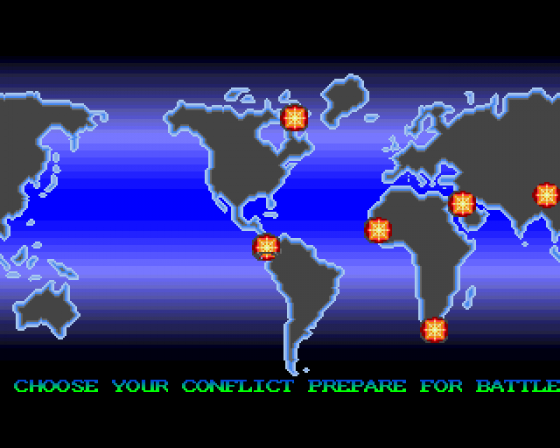
Commodore User
 1st August 1988
1st August 1988
Categories: Review: Software
Author: Steve Jarrett
Publisher: Titus
Machine: Amiga 500
Published in Commodore User #59
Fire And Forget
Following their first, and largely forgettable release, Crazy Cars, French software house, Titus, have now ventured into the 16-bit market once more with what appears at first sight to be the same game - only worse.
Borrowing heavily in its inspiration from the classic Atari coin-op Roadblasters, Fire And Forget uses the 3D road routines from its predecessor with some tepid blasting action bolted onto this already poor foundation.
The Intergalactic Liberation Organisation have destroyed many of the Earth's major cities and are threatening to take control of the whole planet. Only the 'Thunder Master' - a heavily-armed V-16 triple turbo, four-wheel drive car - stands in the way of their plans. As commander of the world's ultimate fighting machine, it is the player's task to negotiate the major conflict areas, destroy the ILO's forces and avert a full-scale nuclear war...

The action takes place across six combat zones set in different locations around the world. These are accessed individually from a map selection screen which appears at the start of the game and also in between each battle.
Luckily for the Thunder Master, the ILO's forces have stationed themselves along the roadways which traverse the otherwise desolate landscapes. The route is lined with sentry posts, gun emplacements and vegetation while the road itself is littered with mines, blockades and tanks. The Thunder Master is also assaulted from the air, as helicopter gunships frequently zoom overhead spitting a barrage of lead death.
The only limitation on the TM's progress is its fuel level, which is depleted as a matter of course, and also on contact with obstructions and enemy fire. The car's ample fuel tanks are refilled, though, on collision with conical fuel cannisters which appear at intervals along the route.

Fire And Forget also offers a two-player option, where the second combatant takes control of the 'Thunder Cloud' - a small, winged craft which mimics the speed of the TM and can be guided to left and right of the screen in order to fend off attacks from enemy aircraft.
On paper, this sounds like it could be lots of fun - as indeed its arcade role model is. Unfortunately, the reality is far less appealing. The amount of obstacles to avoid and the speed at which the enemy craft appear is ludicrous: you really do have to fire and forget, since you have no real hope of avoiding all of the oncoming objects.
The graphics are no great shakes either: the road movement is only moderately effective and the frame update on approaching objects is not particularly smooth, relying on speed to hide its deficiencies.
Other Reviews Of Fire And Forget For The Amiga 500
Fire And Forget (Titus)
A review
Fire And Forget (Titus)
A review by Julian Rignall (C&VG)






